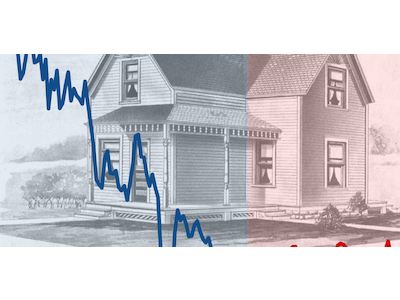From Commodity to Asset: The Truth Behind Rising House Prices
Fix, Blair.
(2024).
Economics from the Top Down. 22 August. pp. 1-30.
(Article - Magazine; English).
![[img]](https://bnarchives.yorku.ca/837/1.hassmallThumbnailVersion/20240822_fix_from_commodities_to_assets_front.jpg)
|
Cover Image
20240822_fix_from_commodities_to_assets_front.jpg Download (469kB) | Preview |
|
|
PDF (Full text)
20240822_fix_from_commodities_to_assets.pdf Download (4MB) | Preview |
|
|
HTML (Full text)
20240822_fix_from_commodities_to_assets.html Download (210kB) |
||
|
Other (Full text - EPUB)
20240822_fix_from_commodities_to_assets.epub Download (5MB) |
Alternative Locations
Abstract or Brief Description
When it comes to rising house prices, nearly everyone has a theory about the cause. There’s ‘too much foreign money’. There are ‘too many immigrants’. There’s ‘too little construction’. And so on.
What unites these explanations is that they appeal, in some way, to the idea that rising prices are caused by a mismatch between supply and demand. And surely that’s true, right?
Yes, it is true … in the same way that death is caused by dying. But of course, that’s circular logic. And so it goes with ‘supply and demand’. Since prices are always caused by the interplay between what we want and what we can get, evoking ‘supply and demand’ leads us pretty much nowhere. Worse, it often puts the focus on short-term patterns, when the real scientific payoff lies in studying price trends over the long term.
Speaking of the long term, many people assume that rising house prices are a recent problem. But in the United States, the pattern dates to the early 1970s. For almost a century before that, US house prices had been dropping against income. And so Americans treated their house like a ‘commodity’ — a thing they bought to live in. But from 1972 onward, house prices began to slowly appreciate against income. And so Americans started to treat their house like an ‘asset’.
It’s this transformation — from commodity-like depreciation to asset-like appreciation — that is the real story of house prices. And the truth is that this story can’t be understood using popular scapegoats. To see why US house prices headed south and then north, we need to forget about supply and demand and instead, peer into the belly of industrialism. We need to ground house prices in the use of energy.
Now, if going from prices to energy sounds like a non sequitur, I’ll show you why it makes sense. And I’ll show you how, when we bring debt into the energy fold, we can explain almost all of the historical variation in US house prices.
The lesson here is simple yet disturbing. When it comes to rising house prices, the trend has less to do with a ‘supply crisis’, and more to do with basic physical limits to industrial supply chains.
Language
EnglishPublication Type
Article - MagazineKeywords
assets commodities debt distribution housing energy price United StatesSubject
BN Region - North AmericaBN Value & Price
BN Business Enterprise
BN Capital & Accumulation
BN Crisis
BN Distribution
BN Growth
Depositing User
Jonathan NitzanDate Deposited
23 Aug 2024 01:30Last Modified
23 Aug 2024 01:30URL:
https://bnarchives.yorku.ca/id/eprint/837Actions (login required)
 |
View Item |

